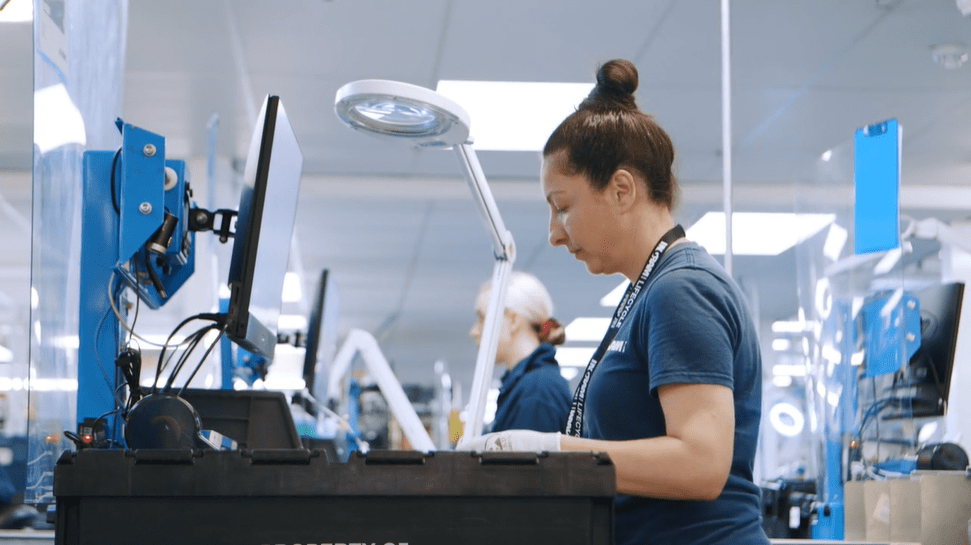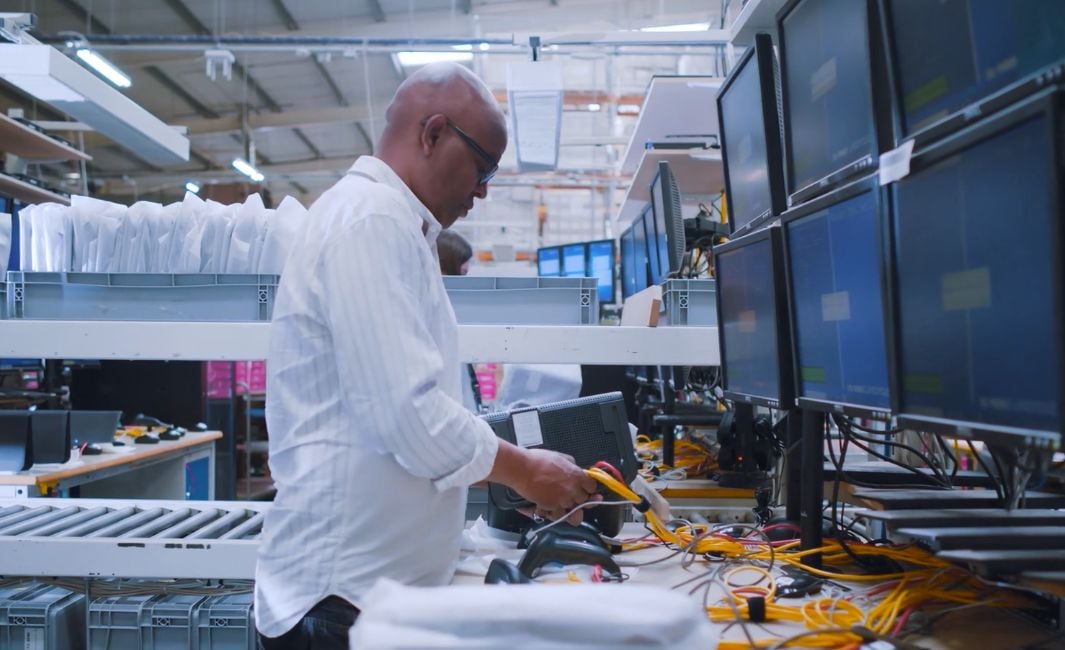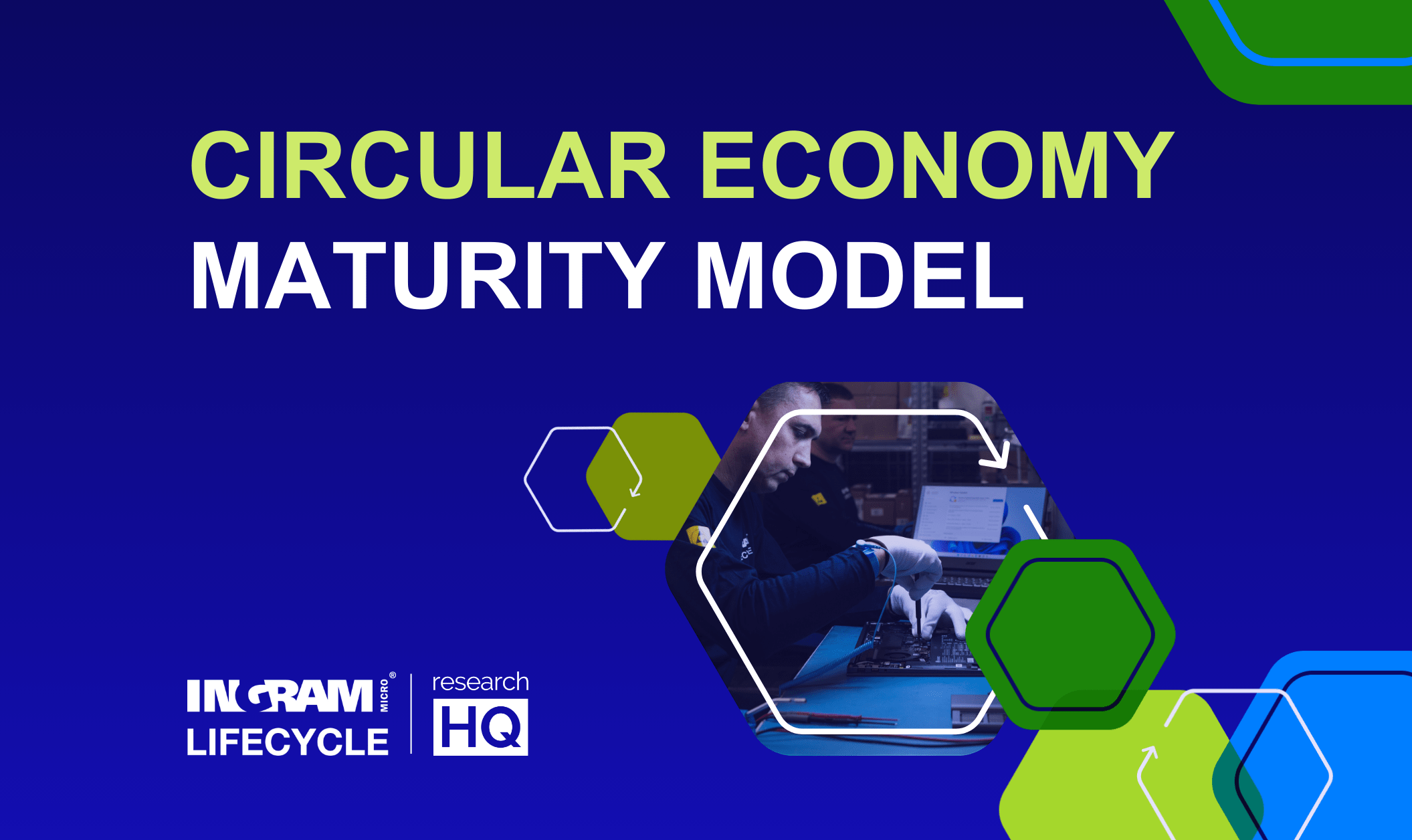In today’s rapidly evolving consumer electronics landscape, returns management is a strategic lever shaping brand reputation, customer loyalty, and bottom-line performance. Forward-thinking directors overseeing reverse logistics, refurbishment, or repair face a complex operational environment marked by rising customer expectations, accelerating product cycles, and a growing demand for sustainability. Successfully navigating these dynamics demands more than incremental improvement; it requires innovative, technology-led approaches that deliver service excellence and measurable commercial value.
Ingram Micro Lifecycle operates returns management programs on behalf of global customers, working to efficiently recover end-user technology products. Our rapid turnaround time without compromising quality yields works to boost customer satisfaction.
This article explores how optimized returns and reverse logistics strategies can unlock new levels of customer satisfaction, elevate Net Promoter Scores, and secure long-term advantage. Drawing on industry best practices, proven digital and automation tools, and actionable insights, we showcase the critical success factors for creating resilient, customer-centric returns experiences that meet both current and future challenges in global supply chains.
Understanding customer expectations in returns management
A customer-centric returns process strives to meet expectations and alleviate pain points of the end user. Customers expect a hassle-free experience that requires minimal effort on their part. This means providing clear instructions, easy-to-follow procedures, and timely updates throughout the process.
Customers also value transparency and honesty. They want to know upfront what their options are, whether it’s a refund, exchange, or repair, and timelines. Meeting these expectations can turn a potentially negative experience into a positive one, enhancing customer loyalty and trust in the brand.
The impact of inefficient returns on customer satisfaction
Inefficient returns processes can be a significant pain point for customers, leading to dissatisfaction and frustration towards your business. When a customer initiates a return, typically they are already experiencing dissatisfaction due to a faulty or unwanted product. If the returns process is cumbersome, slow, or unclear, it compounds their negative experience, potentially damaging their perception of the brand.
For example, logistics delays, lack of clear communication, or complicated return procedures can leave customers feeling neglected and undervalued. These negative experiences may be shared publicly in the form of negative reviews, which can deter potential customers and harm the brand's reputation. In a competitive market, a single bad experience can drive customers to competitors who offer more streamlined returns processes.
The role of reverse logistics in enhancing customer experience
Reverse logistics plays a pivotal role in the returns process, directly impacting customer satisfaction. Efficient reverse logistics systems ensure that returned products are processed quickly and accurately, minimizing the time customers spend waiting for a resolution. This involves not only the retrieval and processing of the returned product but also ensuring that replacement products or refunds are handled swiftly.
Moreover, reverse logistics systems must be agile to adapt to changing customer needs and industry trends. For example, as trade-in schemes and leasing programs become more popular, reverse logistics processes must be flexible enough to support these initiatives seamlessly. An optimized reverse logistics process can significantly enhance the overall customer experience, making it a key component of customer satisfaction strategies.
Boosting Net Promoter Scores through effective returns management
Net Promoter Score (NPS) is a critical metric that gauges customer loyalty and satisfaction. A poor returns process can negatively impact NPS, as customers who have had a frustrating returns experience are unlikely to recommend the brand to others. Conversely, a smooth and efficient returns process can boost NPS by turning a potentially negative situation into a positive one.
Effective returns management involves several key elements: minimizing the effort required from the customer, ensuring speedy resolutions, and maintaining clear and consistent communication. By focusing on these areas, brands can improve their returns processes, leading to higher customer satisfaction and, consequently, better NPS.
Leveraging technology for seamless returns processes
Incorporating advanced technology into the returns process can significantly enhance efficiency and customer satisfaction. Automated systems can streamline various aspects of reverse logistics, from tracking returned products to updating customers on the status of their returns. For example, self-service portals allow customers to initiate returns, track their progress, and receive updates without needing to contact customer support.
Additionally, technologies such as artificial intelligence and machine learning can be used to predict and address potential issues in the returns process before they escalate. By leveraging technology, brands can create a more seamless and efficient returns experience, reducing customer frustration and improving overall satisfaction.
The importance of communication
Clear and consistent communication is vital in managing customer expectations and reducing frustration during the returns process. Customers should receive timely updates on the status of their return, including confirmation of receipt, processing stages, and expected resolution timelines. This transparency helps build trust and keeps customers informed, reducing anxiety and uncertainty.
Communication should also be straightforward and jargon-free. Providing clear instructions and setting realistic expectations can prevent misunderstandings and ensure that the customer knows what to expect at each stage of the process. Effective communication is a key component of a customer-centric returns process and can significantly enhance the overall customer experience.
Sustainable practices in technology returns
Sustainability is becoming increasingly important to customers, and incorporating sustainable practices into the returns process can enhance brand perception. This includes minimizing waste through repair and refurbishment programs, using eco-friendly packaging, and ensuring that returned products are processed in an environmentally responsible manner.
For instance, offering self-diagnosis tools and repair kits can allow customers to fix minor issues themselves, reducing the need for returns and minimizing the environmental impact. Additionally, refurbishing returned products for resale can extend their lifecycle and reduce electronic waste. By prioritizing sustainability, brands can appeal to eco-conscious customers and enhance their reputation as responsible and forward-thinking.
Actionable strategies to improve returns management
To improve returns management and enhance customer satisfaction, brands can implement several actionable strategies:
-
Simplify the returns process: Make the returns process as straightforward and user-friendly as possible. This includes providing clear instructions, easy-to-follow procedures, and minimizing the effort required from the customer.
-
Enhance communication: Maintain clear and consistent communication with customers throughout the returns process. Provide timely updates and set realistic expectations to build trust and reduce frustration.
-
Leverage technology: Utilize advanced technology to streamline the returns process. Implement self-service portals, automated tracking systems, and predictive analytics to enhance efficiency and customer experience.
-
Prioritize speed and accuracy: Ensure that returns are processed quickly and accurately to minimize customer downtime. Implement efficient reverse logistics systems to handle retrieval, processing, and resolution swiftly.
-
Focus on sustainability: Incorporate sustainable practices into the returns process. Offer self-diagnosis tools, repair kits, and refurbish returned products to minimize waste and appeal to eco-conscious customers. Communicate about the sustainability efforts you're making so customers are aware.
-
Train staff: Ensure that customer support and reverse logistics teams are well-trained and equipped to handle returns efficiently. Provide access to repair manuals and genuine parts to maintain high standards and quality.
-
Monitor and improve: Continuously monitor the returns process and gather feedback from customers to identify areas for improvement. Implement changes based on feedback to enhance the overall customer experience.
Avoid lethargic returns processes
By implementing these strategies, retailers, OEMs, and insurers can optimize their returns processes, leading to improved customer satisfaction, enhanced brand perception, and higher Net Promoter Scores. Keeping your reverse logistics streamlined ensures that customer expectations are met and satisfaction is kept as high as possible.
If you don't have the internal resources available to keep a tip-top process, then outsourcing your returns management can alleviate this pressure.
Ingram Micro Lifecycle has developed advanced processes that maximize same-unit repair yields while ensuring rapid turnaround for customer returns. Our solutions span a comprehensive range of technology, enabling global partners to optimize product returns management and elevate the end-customer experience. Our recommerce solution seeks maximum value recovery while reusing or reselling recovered products.
Contact us today to discuss how we can eliminate inefficiencies in your returns management process.
Related articles:
- Device trade-in success: the role of seamless customer experiences
- Opportunities in SDA product returns to boost NPS
- Returns management: how reverse logistics boosts customer satisfaction
- Top reasons consumers return electronics and how to reduce them
- Benefits of a B2B partner supporting B2C operations














